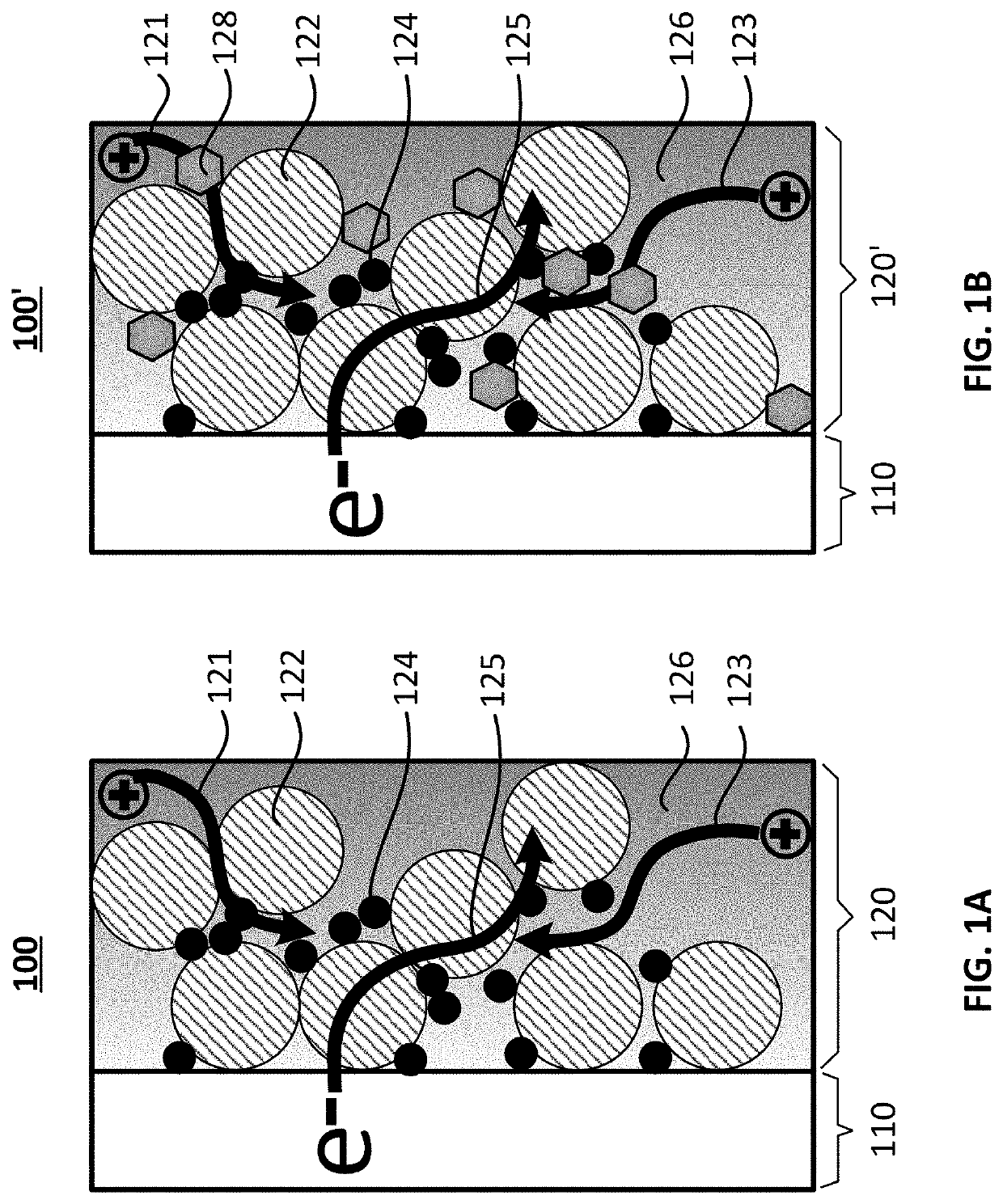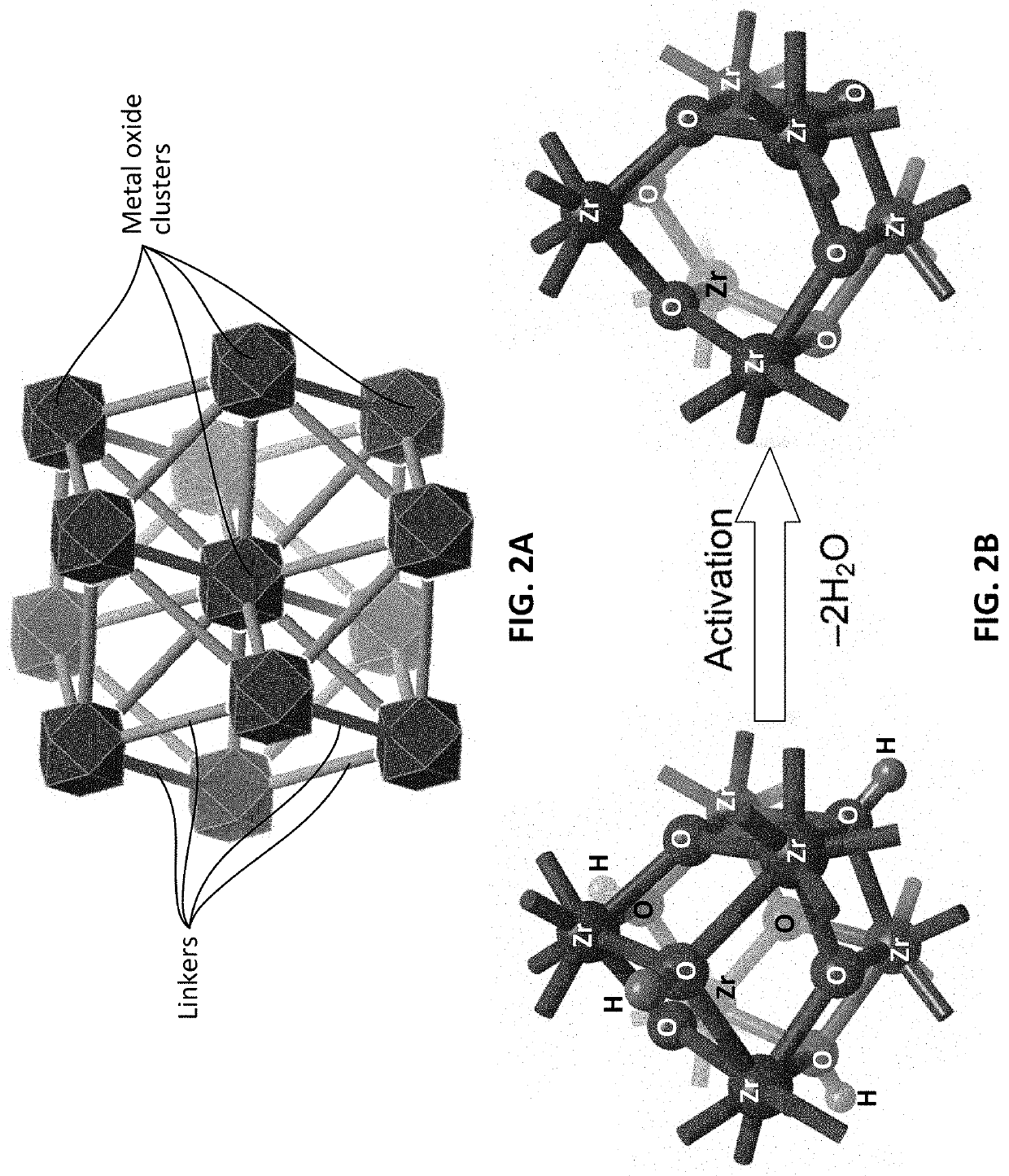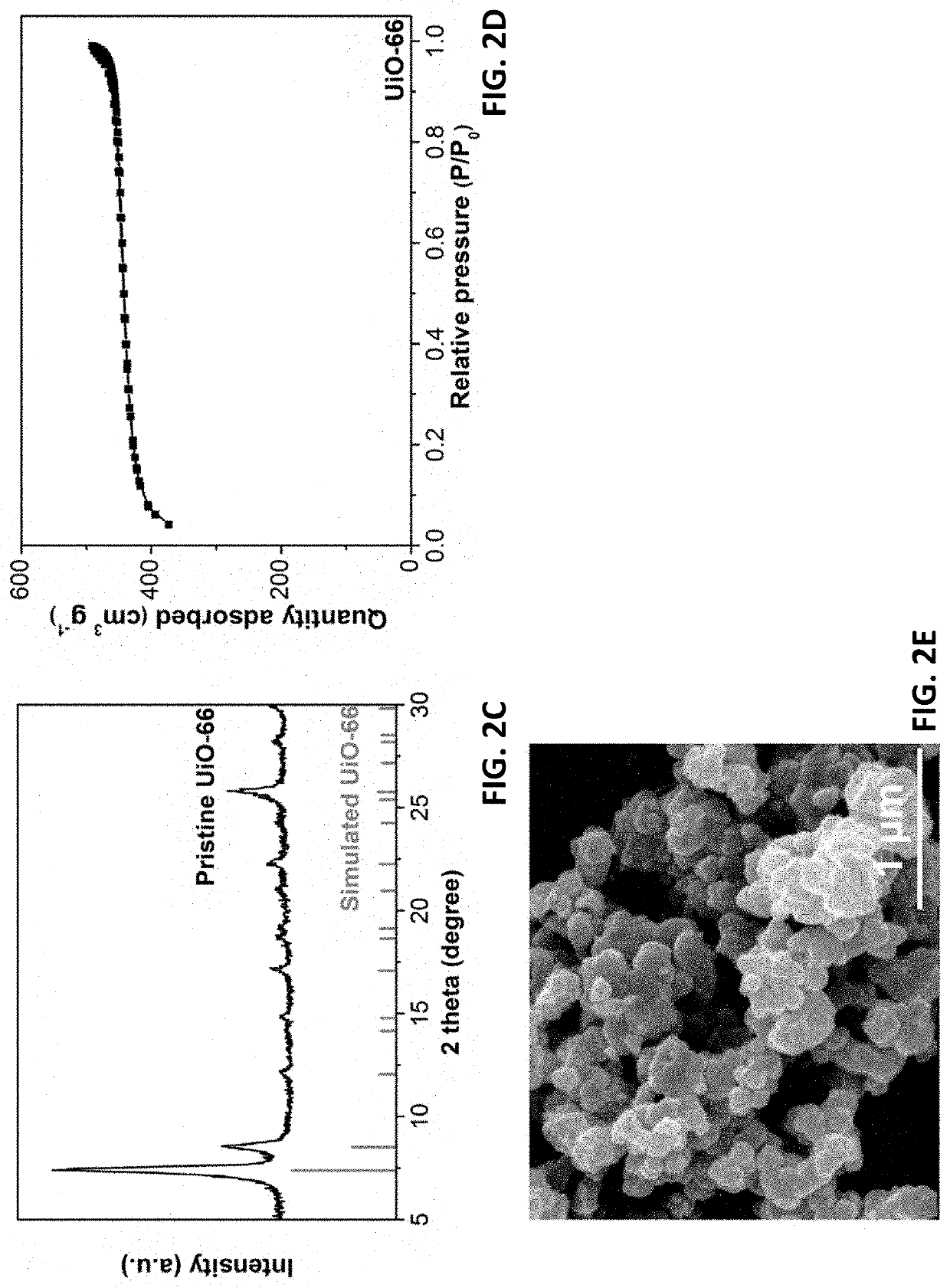Electrodes having electrode additive for high performance batteries and applications of same
a technology of additives and electrodes, applied in the field of batteries, can solve the problems of low ionic conductivity, low battery performance, and low production efficiency, and achieve the effects of improving thermal stability, rate and cycle performance of batteries, enhancing cationic transport, and alleviating interfacial resistan
- Summary
- Abstract
- Description
- Claims
- Application Information
AI Technical Summary
Benefits of technology
Problems solved by technology
Method used
Image
Examples
example 1
[0098]In this exemplary example, the synthesis of UiO-66 MOF includes the following steps. About 1.23 g of BDC ligand and about 1.25 g of ZrCl4 were dissolved in 100 mL of N,N-dimethylformamide (DMF) and about 50 / 10 mL of DMF / hydrochloric acid (37 wt % HCl, concentrated) mixture, respectively. These two fully dissolved solutions were combined and magnetically stirred for an additional about 30 min. The resulting transparent precursor solution was loaded in a tightly sealed glass vial and heated at about 150° C. for about 20 hours. Afterwards, the precipitate was separated from solvents by centrifugation and first washed by DMF three times (3×40 mL). Methanol exchange was performed on the DMF-washed sample over a period of about 3 days. The sample was replenished with fresh methanol twice a day (each for about 40 mL). Eventually the sample was dried at about 80° C. for about 1 day prior to further characterization.
[0099]As showed in FIG. 2C, the crystal structure was determined by X-...
example 2
[0104]Besides the NCM cathode, performances of typical anodes including graphite (C) and lithium titanate (Li4Ti5O12, LTO) with MOF additives were also explored. The MOF additive used here is exemplified while not restricted to UiO-66. The activated UiO-66 were homogeneously mixed with graphite / LTO, acetylene black (CB), polyvinylidene fluoride (PVDF) by a weight ratio of 5:87:5:2 in N-Methyl-2-pyrrolidone (NMP), afterwards the resulting electrode slurry were coated on copper current collect using a doctor blade. The ratio between electrode components is for demonstration purpose and optimized ratio is subject to engineering process. After two step drying at 80 and 170° C. under vacuum. The baked electrodes were calendered to thickness of 60 um with anode loading of 7.5 mg cm−2. For the reference electrodes without MOF, the graphite / LTO content is 92% instead while maintaining contents of CB and PVDF the same. Finally, the prepared electrodes were tailored into electrode disks with ...
example 3
[0105]To illustrate the superiority of MOF additives in a full cell configuration, NCM-C full cell (weight ratio between NCM and graphite is 15:7.5 mg cm−2) in coin cells were fabricated, where MOF additives were added to the cathode side. The combination of NCM and graphite is for demonstrative purposes and any combination of aforementioned electrodes is applicable. The cells were tested under 0.1 C, 1 C and 2 C between 2.5 to 4.2V for prolonged cycling. FIGS. 7A-7C show the cycling performance comparisons between the REF and HPE using NCM-C full cell configurations at different rates. The HPE (NCM-C) exhibit superior rate performance than the REF, especially at 2 C rate, the HPE can deliver almost one-fold higher specific capacity than the REF. The cycling results from full cells suggest that the improvement in terms of rate capability is more evident in full cell configuration, where the electric field might influence the concentration polarization of anion.
[0106]NCM-C full cells...
PUM
| Property | Measurement | Unit |
|---|---|---|
| pore size | aaaaa | aaaaa |
| temperature | aaaaa | aaaaa |
| thickness | aaaaa | aaaaa |
Abstract
Description
Claims
Application Information
 Login to View More
Login to View More - R&D
- Intellectual Property
- Life Sciences
- Materials
- Tech Scout
- Unparalleled Data Quality
- Higher Quality Content
- 60% Fewer Hallucinations
Browse by: Latest US Patents, China's latest patents, Technical Efficacy Thesaurus, Application Domain, Technology Topic, Popular Technical Reports.
© 2025 PatSnap. All rights reserved.Legal|Privacy policy|Modern Slavery Act Transparency Statement|Sitemap|About US| Contact US: help@patsnap.com



